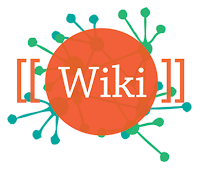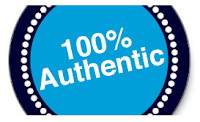8 Week Lesson Plan
 (1) Title:
“Students are dropping out left and right!” - Addressing the first to second year retention rate at an eastern post-secondary institution via a wiki collaborative project.
(1) Title:
“Students are dropping out left and right!” - Addressing the first to second year retention rate at an eastern post-secondary institution via a wiki collaborative project.
(2) Task: Online students in an asynchronous graduate education degree program will conduct problem-based research via a wiki platform for a simulated educational concern: Student Retention from 1st to 2nd year.
(3) Objectives:
To simulate a real world educational concern and promote group problem-based learning among adult graduate students.
By the end of this 8 week lesson plan, students will know how to do the following:
By the end of this 8 week lesson plan, students will know how to do the following:
- Create, design and develop a wiki via editing and formatting the wiki canvas as well as inserting graphics.
- Identify, research, and analyze 3 student retention models.
- Compare pro/cons, cost, and implementation requirements for each retention model.
- Compose and submit a review/recommendation report for 1 select retention model to be implemented as the university's retention strategdy.

(4) Target
audience: Course instructor and fellow online classmates.
(5) Time Length:
8 week project
(6) Materials
needed (handouts, worksheets, etc.):
- Hardware: Computer, iPad, or tablet
- Accessibility: Internet access
- Web 2.0 tools: Skype account; wikispaces account (student-student interaction)
- Alternate Communication: email (student-student interaction)
- Scenario: Instructions to students

(7) Instruction
procedure:
·
Problem Statement
- The Chancellor at a research 1, east coast, postsecondary university is very concern about the undergraduate retention rate at the university. Specifically, recently received retention data shows the freshman to sophomore year attrition rate as 62%. In other words, more than one-half of the 1st year students are not returning to the school after their 1st year.
·
Theoretical Framework: Academic and
social integration (See reference section below)
- Using Vincent Tinto’s academic and social integration student retention model as a starting point, students will research, analyze, and discuss 3 other student retention models in relation to the Chancellor's concern. A comparative analysis will done on all four models.
(8) Suggested
learning activities/practices:
* Student Retention Project: The wiki platform should be used to record the research, analysis, and discussion process associated with this problem-based project.
* Matrix Chart: Completion of a comparison matrix for the four student retention models: Tinto, model 1 + Author(s), model 2 + Author(s), model 3 + Author(s), model 4 which lists the models tenets, pro elements, con elements, implementation needs, and costs.
Student Retention (SR) Model Matrix
|
||||||
Model#
|
Author(s)
|
Theory
|
Pro
|
Con
|
Cost
|
Implementation
Requirements
|
(1).
|
Vincent Tinto
|
Academic and social integration
|
Student centered
|
Labor intensive for university faculty
& staff
|
Minimal due to using preexisting
university resources
|
Institutional support
Stakeholders buy in
|
(2).
|
||||||
(3).
|
||||||
(4)
|
||||||
(9) Evaluation
(rubric, grading criteria, etc.):
- A scoring rubric will be used to evaluate the completed project.
- Each student in the class and the instructor will score the group's collaborative project.
- The scoring will center on the submitted end products:
- Matrix table: Inclusion of all requested information - Tinto, model 1 + Author(s), model 2+ Author(s), model 3 + Author(s), model 4 which lists the models tenets, pro elements, con elements, implementation needs, and costs.
- Collaborative written report: Contribution and participation of all team members.
- Wiki: Clarity and visual appeal.
References
St. John’s University. (2013). Tinto’s
theory of freshman development. Retrieved from http://www.stjohns.edu/parents/resources/theory.stj
Tinto, V. (n.d.). Taking student retention
seriously. [white paper]. Retrieved from
http://www.umesgolf.com/assets/0/232/3812/4104/4110/bd28b4ae-e1cc-4575-9b37-535d2d2be5f1.pdf
(11) Lesson/Training plan examples you've found useful but not listed below (optional)
Images
(n.d.). Raw materials. [Web graphic]. Retrieved from http://www.lotrading.com/images/raw_mat_en.jpg
(2013). Student retention. [Web graphic]. Retrieved from http://www.onlinecollegecourses.com/wp-content/uploads/2012/01/What-Every-Student-Should-Know-About-Online-Student-Retention-300x242.jpg
(n.d.). Working the wiki way. [Web graphic]. Retrieved from https://blogger.googleusercontent.com/img/b/R29vZ2xl/AVvXsEhQoHu25BHrpeMnn_MJXjDKrndTtuN-VHXtNRWk1Dtr1pQ6XOw2tJSCCif9kWnqjB_gbuJLf5fUBJEehy0uYrCzPjaPlL5jxA5D8wG3_41OpW_B0YO_0arZRGyVjy7UQ4DxEXfagJYDFsZ6/s200/working-the-wiki-way.jpg
Images
(n.d.). Raw materials. [Web graphic]. Retrieved from http://www.lotrading.com/images/raw_mat_en.jpg
(2013). Student retention. [Web graphic]. Retrieved from http://www.onlinecollegecourses.com/wp-content/uploads/2012/01/What-Every-Student-Should-Know-About-Online-Student-Retention-300x242.jpg
(n.d.). Working the wiki way. [Web graphic]. Retrieved from https://blogger.googleusercontent.com/img/b/R29vZ2xl/AVvXsEhQoHu25BHrpeMnn_MJXjDKrndTtuN-VHXtNRWk1Dtr1pQ6XOw2tJSCCif9kWnqjB_gbuJLf5fUBJEehy0uYrCzPjaPlL5jxA5D8wG3_41OpW_B0YO_0arZRGyVjy7UQ4DxEXfagJYDFsZ6/s200/working-the-wiki-way.jpg







